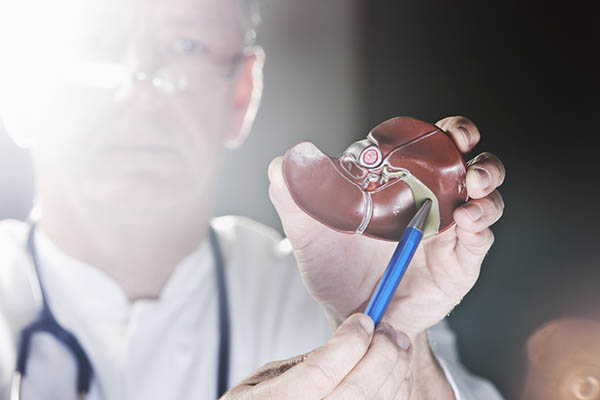Unraveling the Mystery: What Are Gallstones?
Gallstones are hard, pebble-like deposits that form within the gallbladder. They can range in size and are primarily composed of cholesterol or bilirubin. Identifying the symptoms of gallstones is essential, as they can lead to severe complications if left untreated.
The most common symptoms of gallstones include abdominal pain, nausea, vomiting, fever, and jaundice. Other signs may include dark urine or clay-colored stools. In some cases, an obstruction may occur due to the presence of a large stone in the bile ducts. If this happens, it can lead to inflammation or infection of the gallbladder or pancreas.
Recognizing the Signs: Symptoms of Gallstones
Gallstone symptoms can include sudden and rapidly intensifying pain in the upper right portion of the abdomen, back pain between the shoulder blades, or pain under the right shoulder. Additionally, symptoms such as jaundice, nausea, and vomiting may indicate the presence of gallstones requiring medical attention.
If a gallstone becomes lodged in the bile duct, it can cause severe complications such as cholecystitis (inflammation of the gallbladder), cholangitis (inflammation of the bile ducts), or pancreatitis (inflammation of the pancreas). These conditions can lead to infection and require prompt medical care.
Unearthing the Causes: How Do Gallstones Develop?
Gallstones can develop due to an imbalance in the substances that make up bile, including cholesterol and bilirubin. Factors such as genetics, weight, and diet can also play a significant role in gallstone formation, making understanding these factors crucial in prevention.
In some cases, the gall bladder does not empty completely or frequently enough. This can cause an accumulation of bile and lead to the formation of stones. Gallstones are more likely to form if someone is overweight, pregnant, on certain medications such as birth control pills or hormone therapy drugs, has type 2 diabetes, or consumes a high-fat diet.
Lifestyle and Diet: Role in Gallstone Formation and Prevention
A healthy lifestyle and a balanced diet can help prevent gallstone formation. Regular exercise, maintaining a healthy weight, and consuming a diet high in fiber and low in fat and cholesterol are crucial components in reducing the risk of gallstones. Additionally, increasing the intake of fluids can help to prevent gallstones as it stimulates the gallbladder to contract and empty, preventing bile from accumulating.
It is also important to avoid rapid weight loss or crash diets as they can cause an imbalance in cholesterol levels and increase the risk of developing gallstones. Making lifestyle changes such as exercising more frequently, eating a balanced diet, and drinking plenty of fluids can help reduce the risk of developing gallstones.
Deciding the Course: When is Surgery Necessary for Gallstones?
When gallstones cause symptoms or complications, such as gallbladder inflammation or blockage of the bile ducts, surgery may be necessary. A cholecystectomy, the surgical removal of the gallbladder, is the most common treatment for symptomatic gallstones, offering relief and preventing future complications.
In some cases, nonsurgical treatments such as medications or endoscopic retrograde cholangiopancreatography (ERCP) may be used to break down or dissolve gallstones. These treatment options are typically reserved for those who cannot undergo surgery due to health conditions or age.
Exploring Surgical Options: Types of Gallstone Surgery
Several surgical options exist for gallstone removal, including laparoscopic and open cholecystectomy. Laparoscopic surgery is less invasive, has a shorter recovery time, and is the preferred method in most cases. However, an open procedure may be necessary in certain situations. In either case, the ability to completely remove gallstones is essential for preventing future complications.
Postoperative Care and Recovery: Life after Gallstone Surgery
Recovery from gallstone surgery generally involves rest, pain management, and a gradual return to regular activities. Adopting a healthy lifestyle and following dietary recommendations, such as a low-fat diet, are vital for preventing gallstone formation in the future.
Regular follow-up visits with a healthcare provider are recommended to ensure proper healing and to monitor for any issues related to gallstones. Additionally, regular exercise can help reduce the risk of complications and may aid in overall recovery.
Investigating Alternatives: Nonsurgical Treatments for Gallstones
For patients who are not candidates for surgery, alternative treatments such as bile acid pills and shock wave lithotripsy may be considered. These treatments can dissolve or fragment gallstones, but they are not suitable for everyone and may not prevent the formation of new gallstones. Therefore, it is important to discuss all options with a healthcare provider before making any decisions.
In some cases, dietary changes may be recommended as a way to reduce the risk of gallstones or prevent symptoms. Increasing the intake of fluids and fiber-rich foods can help stimulate the gallbladder and reduce the risk of stones forming in those who are at high risk.
Conclusion: Navigating Gallstone Management and Prevention
Understanding gallstones, recognizing their symptoms, and seeking timely intervention is crucial for preventing severe complications. Whether managed through lifestyle modifications, medication, or surgery, a proactive approach to gallstone treatment and prevention can significantly impact individual well-being.
Despite the discomfort and inconvenience of gallstone symptoms, proper care and attention can ensure a healthier future. By understanding their risk factors and making lifestyle changes such as exercising regularly and consuming a balanced diet, individuals can better manage their risk of developing gallstones. Additionally, seeking medical help at the onset of symptoms can reduce the chances of complications that often accompany this condition.



 Close
Close